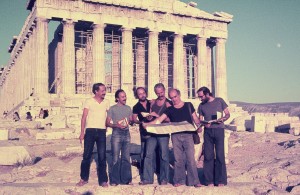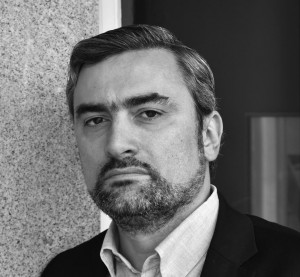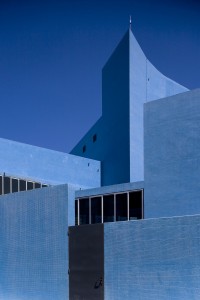The universalists arrive in Paris

Portuguese architects on a field trip to Greece, summer 1976. Fernando Távora and Álvaro Siza Vieira (on the right), among others. © Personal archive of the Architect Alexandre Alves Costa
This multimedia exhibition casts its gaze over half a century of Portuguese architectural thinking and production and spanning the works of benchmark architects such as Fernando Távora, Alberto Pessoa, Ruy d’Athouguia, Manuel Tainha, Pancho Guedes, Nuno Teotónio Pereira, Nuno Portas, Álvaro Siza, Alcino Soutinho, Eduardo Souto de Moura, João Luís Carrilho da Graça, and Manuel Graça Dias; as well as some of the most promising of the Portuguese architects to more recently emerge, including Manuel and Francisco Aires Mateus, ARX Portugal, Paulo David, Paula Santos, João Mendes Ribeiro, Cristina Guedes and Francisco Vieira de Campos. The exhibition intersperses material relating to over 50 projects – including scale models, technical drawings and facsimiles of sketches and designs by these architects – alongside photographs, texts and caricatures reflecting the political and social transformations ongoing in Portugal over the last half a century as exhibition curator Nuno Grande explains.
Just how does universalism apply to Portuguese architecture?
The theme of universalism in Portuguese culture is not new having been approached by many thinkers from Miguel Torga to Agostinho da Silva, from Eduardo Lourenço to José Gil. Indeed, many philosophers and writers have written about the Portuguese manner of interrelating with the world, or with the “other”; something that, in all truth, comes from ancestral times: our relationship with voyaging, with the diaspora, with emigration and even with colonisation, phenomena that, to a greater or lesser extent, generated this “universalist” position in relation to that surrounding us.
In architecture, this theme has not been greatly deepened even if everybody recognises that Álvaro Siza, for example, holds a peculiar capacity to interrelate with other geographies, with other cultures. He always does this with a great deal of attention to the context where his work takes place, seeking references from the great universe of the History of Architecture in order to, subsequently, inscribe within the respective site. This is an interesting example of the way in which the best Portuguese creatives have always established a conceptual bridge between that which we today call “local” and that we term “global”. This is a positioning that is neither localist nor globalist and is therefore “universalist”; hence, there is no interest in imposing some completely regional, folk based architecture, or the pretentiously “Portuguese”, just as there is also no wish to be identical all over the place as happens nowadays with the productions of many of the global “star architects”. Within this context, this proves an architecture that is always weighing up these two scales, these two dimensions.
Does this in some way explain why there are two Portuguese Pritzker winners?
Certainly. Eduardo Souto de Moura – who is today far more than some “disciple” of Siza – has himself become a “master”, in turn generating new “disciples” in his wake. Both won the Pritzker prize, the greatest distinction that one can gain in the world of architecture. This really does represent an unusual feat: there are not many countries able to take pride in two architects recognised in this fashion. For Siza and Souto de Moura, the question of globalisation proves a means of acting and a way of being in the world. However, they do not repeat themselves. They do not always produce the same work in whatever the location. They carry with them this “universalist” perspective out to each place and adapting their disciplinary knowledge to the different contexts. They are not global architects, they are universal architects.
Which Portuguese architects fall within the scope of this universalist positioning?
One of the essential questions involves understanding how this positioning gets handed down from generation to generation. I attempted to choose architects that fell within some of these generational “lineages”, that is, that they were disciples of other architects that already held this position. In turn, the latter had conveyed this to the new generations even while, naturally, far from any academic oriented perspective. I thus seek to embrace at least the three generations that have worked this “universalist” perspective since 1960, at least since Keil do Amaral, Fernando Távora and Nuno Teotónio Pereira, to simply name the oldest examples. Naturally, architects are not immune to the political and social transformations occurring in the world around them and that condition architectural commissions whether public or private in origin. I hence resolved to frame these linages or these “generational transmissions”, within the five themes [see below Five moments of Portuguese architecture on exhibition] that have gone about “contaminating” Portuguese architecture over the last five decades. The exhibition furthermore shows how the youngest of the artists present, born in the 1960s and already with consolidated careers – such as the Aires Mateus brothers, the ARX Portugal atelier, João Mendes Ribeiro or Paulo David –, received this methodology from the earlier generations whether working in Portugal or internationally. They display no complexes whatsoever at having set off from a country on the periphery of Europe, with intimate knowledge about the History of Architecture and dealing openly with the conditions prevailing for international commissions.
Do we come to a close with the generation of architects born in the 1960s? Why is that?
I think that in architecture, despite everything, you need to have a certain “ballast”. I usually say that architecture is a profession for the “mature”. You need to have people that have demonstrated in more than just a couple of works that they have a way of thinking that stretches beyond the “new for the sake of the new”, the success of some first project, the media comments and coverage or the “like” votes they get on social networks. There has to have been some kind of consolidation.
This exhibition is about professionals that have already shown that, contrary to what is very commonly maintained, they can do the “new” without breaking off from the past. There are those who defend that, as in the world of Art, in Architecture, indeed in contemporary creativity, it is necessary “to kill the father” in order to survive. I believe the opposite. Portuguese architecture has proven that the “father” – metaphorically referring to Siza – manages to remain far more youthful in many of his works than those labelled “young” and claimed to be innovative. And there are those architects who, having worked with Siza or Souto de Moura, with Byrne or Carrilho da Graça, today manage to step beyond the stigma of “loyal follower”, managing to reinvent the teachings of their respective mentors. These are the architects that interest us in characterising the most recent generations.
How are the political-social transformations of this last half a century evoked in the exhibition?
In the images of the period, among others, by Alfredo Cunha, who is probably the photographer who has portrayed Portugal and its particular characteristics throughout the longest number of years. Some of the images that he took over the last fifty years are continuously projected throughout the exhibition and accompanying pictures by João Abel Manta, perhaps the greatest caricaturist of the Portuguese scene in recent decades. And we have the texts by Eduardo Lourenço that speak to us about all these moments. There are these three non-architectonic perspectives on our reality (even if Manta is an architect by background).
In parallel, we have interviews with five Portuguese architects – Ana Tostões, Ana Vaz Milheiro, José António Bandeirinha, Jorge Figueira and Ricardo Carvalho – and four French critics – Jean-Louis Cohen, Jacques Lucan, Dominique Machabert and Francis Rambert –, personalities who recognise the knowledge sustaining and underpinning Portuguese architecture and that in themselves represent highly distinct gazes. We shall confront the opinions of the Portuguese with those of the French and something that makes particular sense at an exhibition in Paris.
FIVE MOMENTS OF PORTUGUESE ARCHITECTURE ON EXHIBITION:
1. universalism vs. (inter)nationalism (1960-1974)
This portrays the confrontation with the dying gasps of the nationalist dictatorship of Oliveira Salazar but also alongside the debate over internationalism within the scope of Portuguese architects. “In the 1960, the architects sought to follow the international trends but without giving up on turning to Popular Architecture in Portugal and to its respective spatial teachings”, the curator explains.
2. universalism vs. colonialism (1961-1975)
This theme exposes the questions facing architects working in Portuguese colonial Africa, especially Mozambique and Angola: how to produce a tropicalist architecture in accordance with the international modernism trends? “It is highly interesting to contemplate how some architects worked based upon this fusion between erudite European and Brazilian trends and the indigenous African cultures”, the curator observes.
3. universalism vs. revolution (1974-1979)
With the 25 April revolution, one of the problems facing the first provisional government was the “right to social housing”. This proves a key moment in which the architect emerges as a social actor attempting to improve the living conditions of the people. The SAAL (Local Touring Support Service) process, launched by Nuno Portas, then State Secretary for Housing, had a major impact between 1974 and 1976.
4. universalism vs. Europeanism (1980-2000)
“How did we move to enter the European Union and what consequences did this bring to Portuguese architecture?”, asks Nuno Grande. The response comes with structural funding and new opportunities for architects both in Portugal and internationally. With the opening up to the European market, Portuguese architects began submitting entries to international tenders and getting their first works published in prestigious magazines and journals – especially in France, where Portuguese architecture had remained all but unknown through to 25 April. “The way in which we related to Europe, that had hitherto been relatively distant, changed decisively”, highlights the curator.
5. universalism vs. globalisation (2001-2016)
The final moment in this exhibition articulates the contrast between the peripheral condition of Portugal and the strong and universal projection of its culture. This universality, which has as its maximum exponents the most celebrated of Portuguese architects – Álvaro Siza and Eduardo Souto de Moura –, is today undergoing reinvention by a new generation both inside and outside the Portuguese territory.
LES UNIVERSALISTES. 50 ANS D’ARCHITECTURE PORTUGAISE
Curatorship: Nuno Grande
13 April – 29 August 2016
Cité de l’Architecture et du Patrimoine, Paris


